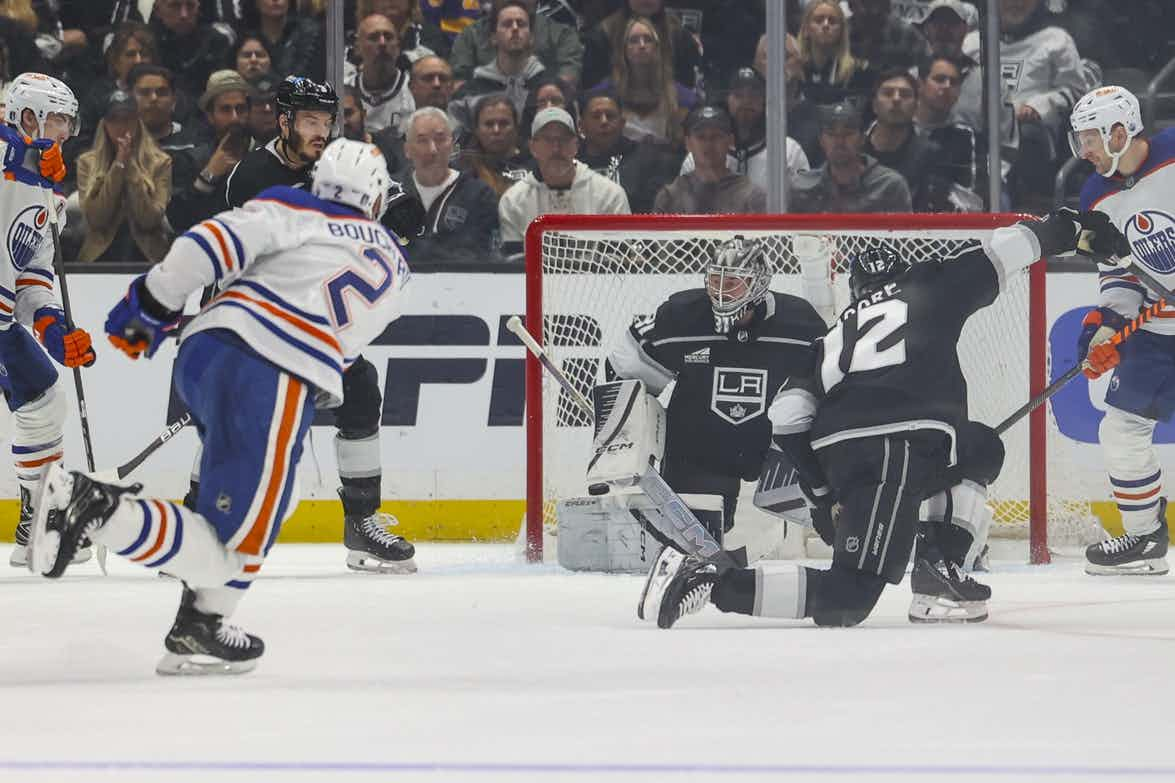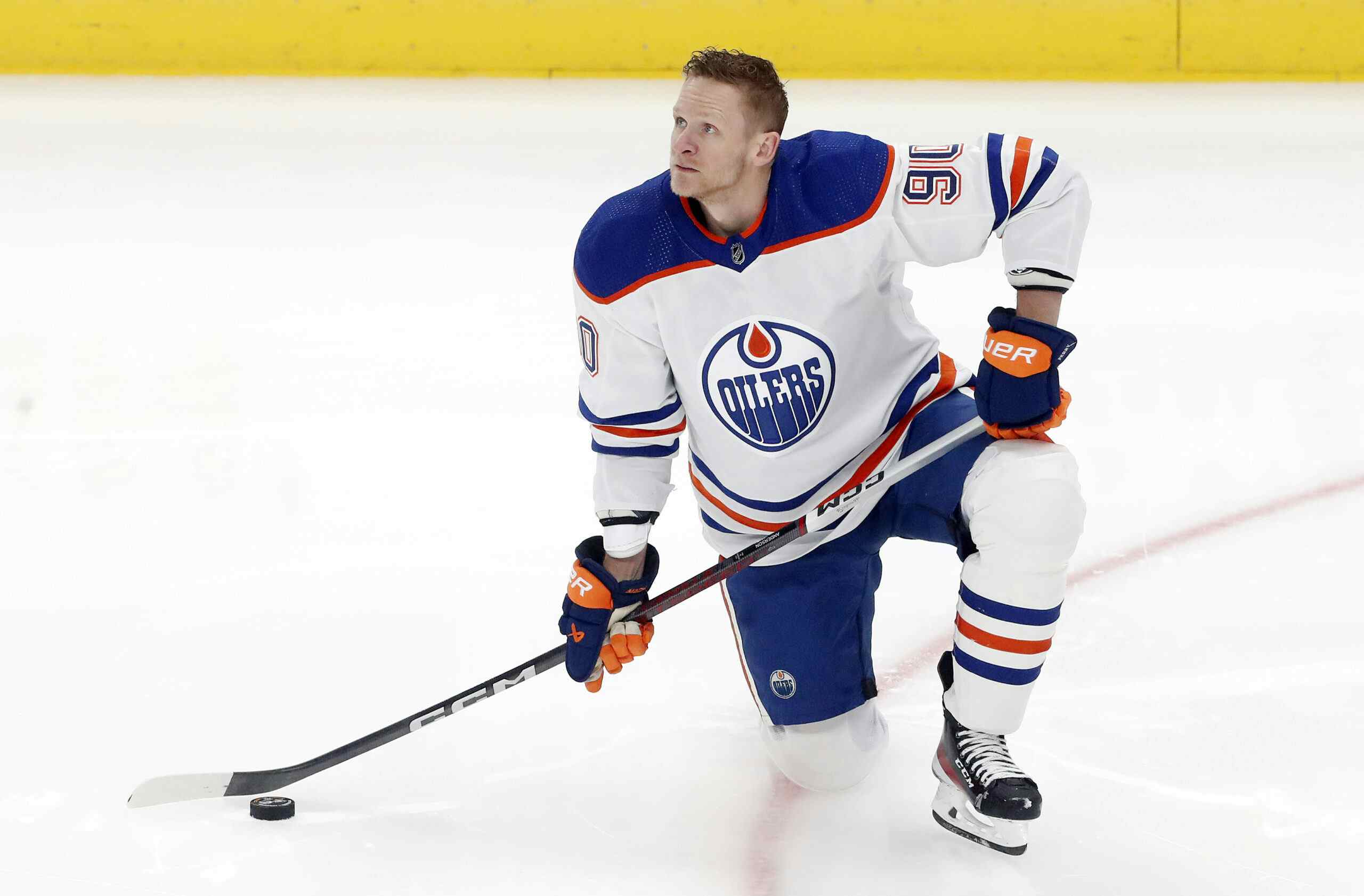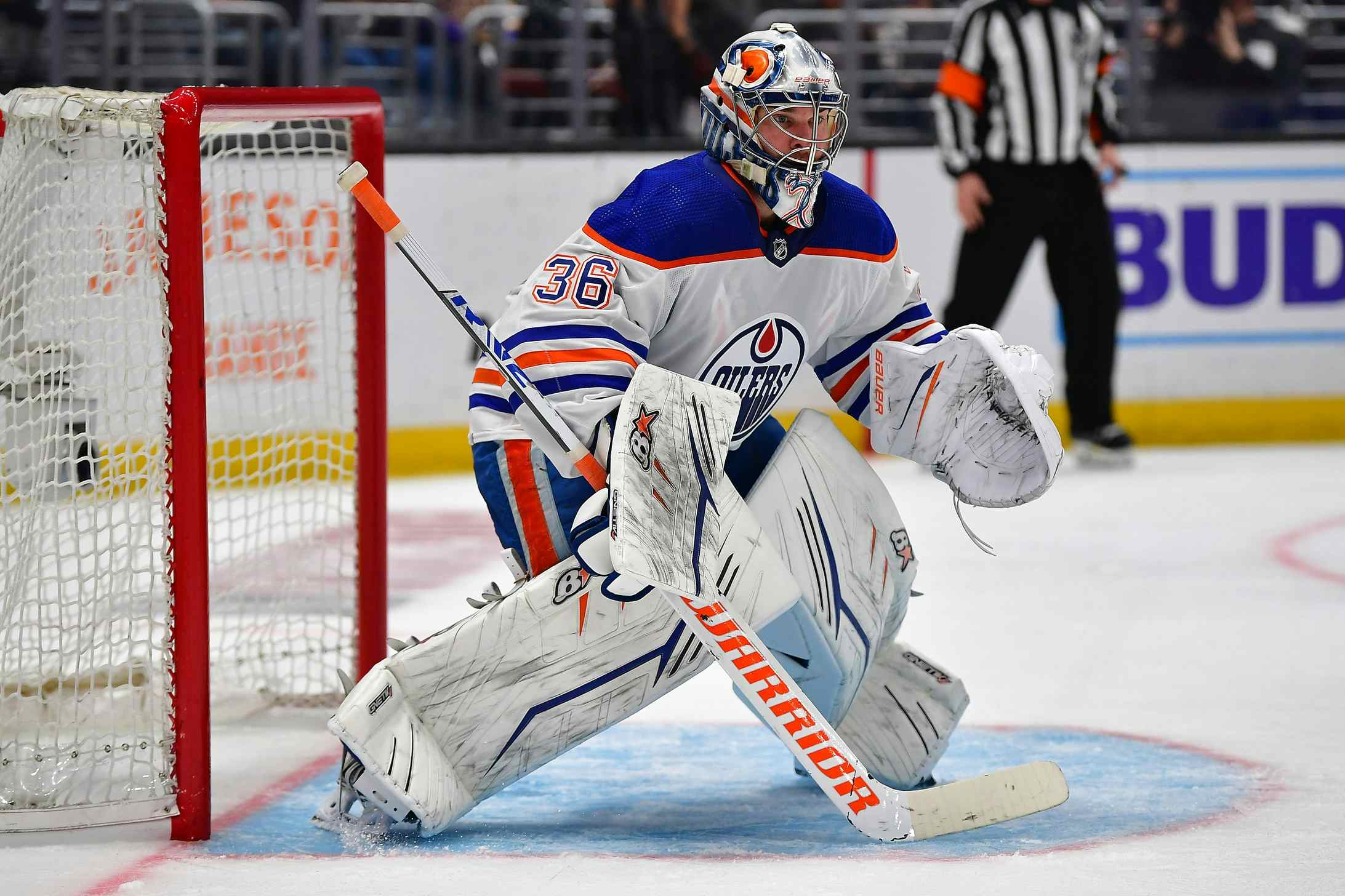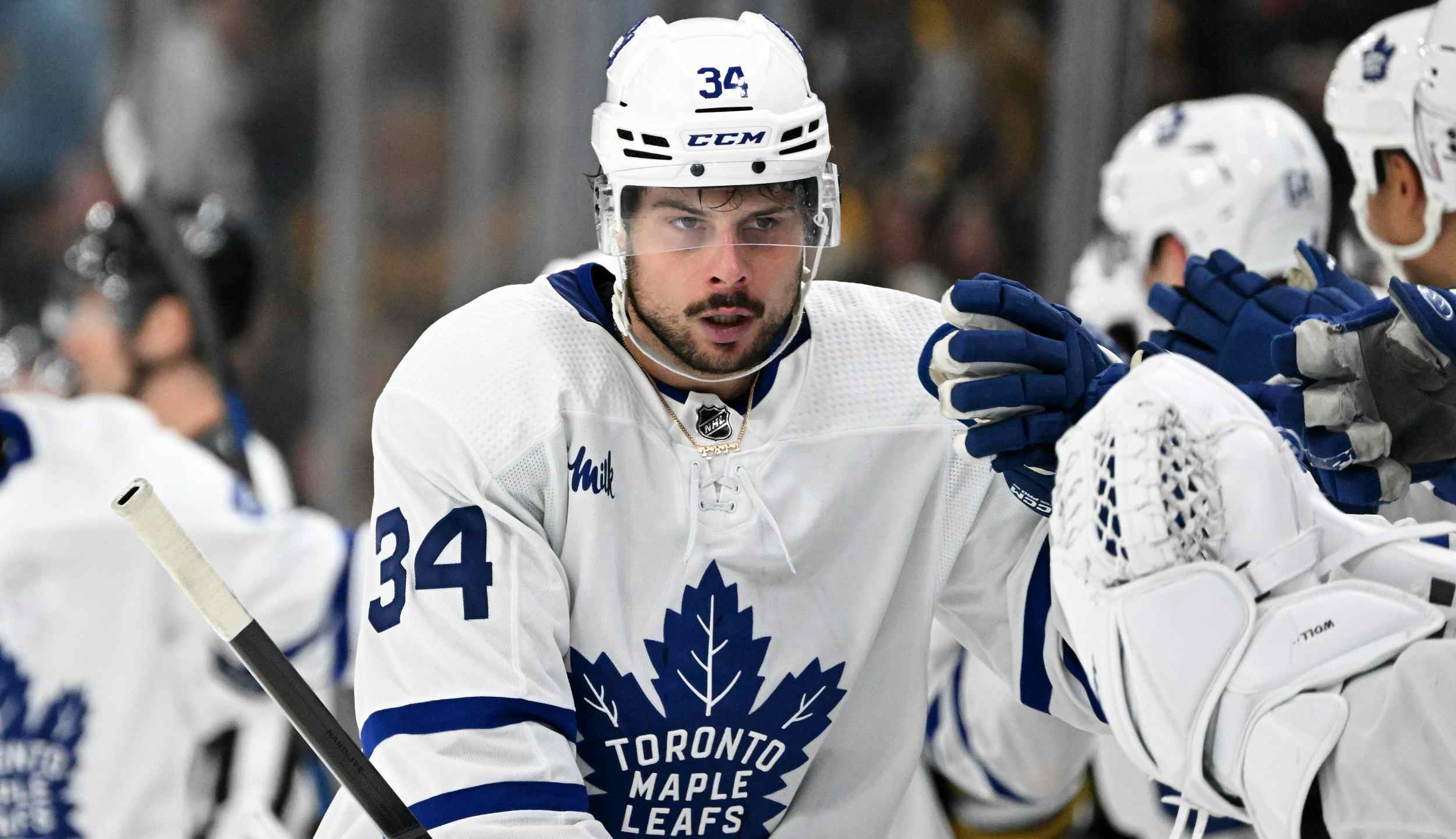Ten Points: Yakupov, RNH, and the Leafs as the worst franchise in pro sports

Nail Yakupov (Resolute/Wikimedia Commons/CC BY-SA 3.0)
1. A year in Russia? With the end of the collective bargaining agreement rapidly approaching – it expires on Saturday – the possibility of Nail Yakupov spending part or all of the year in the KHL is very real.
Yakupov would play for Neftekhimik Nizhnekamsk, the team that selected him 19th overall back in the 2010 KHL Draft. The club also happens to be his hometown team, and the last few seasons has been decidedly overmatched by other KHL clubs. Still playing for a weaker team probably means more ice-time and it isn’t likely to hurt him – Alex Ovechkin played one year and Evgeni Malkin two in Russia after being drafted before coming to North America, and the KHL is the world’s second-best league.
2. Ryan Nugent-Hopkins is much worse in the faceoff circle than Anton Lander. The raw percentages paint a similar picture – a picture of two rookies who stunk in the faceoff circle last year. Anton Lander won 43.3 percent of his draws; Ryan Nugent-Hopkins won 37.5 percent. The gap, though, is actually much wider. While both players took most of their draws at even-strength, Nugent-Hopkins’ extra work came on the power play (where it’s easier to win faceoffs) while Lander’s work came on the PK (where it’s much harder to win faceoffs. At even-strength? Lander won 45.8 percent of his draws (not bad for a rookie) while Nugent-Hopkins won 37.1 percent.
3. The NHLPA’s next move. Today, we saw the opening moves of post-negotiation NHLPA strategy, and is expected it is to the courts. Unlike other major leagues, the NHL has a significant Canadian presence, which opens Canadian law to the players as an avenue to prevent a lockout. In Quebec, the union has asked the courts to rule against a lockout on the grounds that the NHLPA is not certified as a union in that province, while they’re looking at their options throughout the country and are pushing in Alberta as well.
Whether it will work, I don’t know. What I do know is that this path also ultimately leads to decertification – the elimination of the NHLPA as a union. If that happens, the NHL’s presence in Canada should offer it a jurisdictional advantage that other associations haven’t had in fighting their leagues.
4. McKenzie’s take on a lockout. I’m a big fan of Bob McKenzie, and his offering on the current CBA battle only reinforces that position. I have some quibbles – I think calling the last lockout a battle of principle is too generous to both sides – but on the whole it’s a balanced, detailed assessment of where the league is at now. The one real negative? He’s not optimistic; this is the concluding line from his first paragraph: “And to think we’re likely just taking the first few steps this week towards walking through what is likely to be a very long, dark tunnel.”

5. The Toronto Maple Leafs are the worst franchise in major league sports. This according to ESPN. On the one hand, Toronto has stable ownership, the team is basically a license to print money, and their fans are as ridiculously devoted as any in pro sports. On the other hand, the richest team in hockey owns both the longest championship drought and longest streak without a playoff appearance in the NHL. So, yeah.
Then again, any list that puts the Phoenix Coyotes as he best franchise in the NHL and the Leafs as the worst is clearly not being written from an ownership perspective.

Jiri Tlusty, Toronto’s first-round pick in 2006 (Benjamin Reed/Wikimedia Commons/CC BY-SA 2.0)
6. If you’re going to be bad, go all the way. The Edmonton Oilers own the second-longest playoff drought in the NHL, at six seasons – just one less than Toronto. Fortunately for the Oilers, they haven’t just missed the playoffs; they’ve missed by a mile. With the departure of Luke Schenn, not one of the Leafs first-round picks in that span is a full-time player for them as of now (Nazem Kadri, with 21 games last season, comes closest). The Oilers have four, and that’s not counting Magnus Paajarvi or Nail Yakupov.
7. WOWY analysis doesn’t always mean what we think it does. WOWY – or with and without you – is a favoured method of various stat-heads to try and ferret out individual contributions. When players frequently spend time together, it can be difficult to identify statistically which player is driving the play. To compensate, one method of analysis is to compare how a player performed with and without a given linemate. So, to pick an Oilers example, let’s look at Ryan Smyth’s Corsi rating (Corsi is a plus/.minus measure of goals, shots, missed shots and blocked shots at even-strength and correlates closely to scoring chances) with and without Shawn Horcoff:

So, Smyth spent almost equal amounts of time with and without Horcoff, and the team seems to have done better when Smyth played with Horcoff. Additionally Horcoff’s numbers without Smyth are just a whisker lower that with him (46.9 percent of Corsi events were positive). So, we might conclude that a) Horcoff was the player driving the line and b) playing with Horcoff was beneficial for Smyth. Those things may or may not be true, but it would be a mistake to conclude them. Here are Smyth’s numbers with and without Devan Dubnyk:

Now, if we take that data and use it in the same way, we might conclude that Smyth should be a healthy scratch in games where Devan Dubnyk plays. That would be wrong, though; in reality all we’re seeing here is timing – Smyth was hot early in the year (when Khabibulin played a lot) and cold late in the year (when Dubnyk played a lot). It looks superficially like Dubnyk made Smyth a worse player, but that’s not what’s going on.
The point here is just that there are other factors and when doing this sort of analysis it’s important to be cognizant of them. It’s still a useful tool, but it needs to be used carefully.
8. Other factors and ‘Record with Player X in the lineup.’ The previous point is also something to keep in mind on a more general level. For instance, take this quote from Sportsnet’s community boards back in February:
I think someone mentioned it in the game thread, but our record with and without Barker is night and day. Is it just a coincidence, or does his first pass out help that much? We are 10-2-1 with him in the lineup and 11-23-3 without him. I know, we have to see him in more games, and there are other circumstances, but that is a huge difference in win %. Maybe he’s our good luck charm.
The Oilers went 3-7-2 over the last 12 games Barker played.
All that was happening was that Cam Barker was in the lineup early in the season during Nikolai Khabibulin’s hot streak, and injured right about the time the Oilers started losing. This is known as “correlation does not equal causation” or put another way “just because a guy’s in the car doesn’t mean he was driving.”
9. Correlation ≠ Causation, Part II. Sometimes, wearing a given pair of socks, underwear or arrangement of facial hair coincides with a winning/losing streak. Additionally, sometimes betting on a victory coincides with a loss, or vice versa. Sometimes, shortly after speculating that a goalie will get a shutout, the other team scores a goal.
These are not related events. They are coincidences.
10. Remembering Igor Korolev. This past Friday was the one year anniversary of the plane crash that wiped out the Lokomotiv Yaroslavl hockey team. One of those killed was assistant coach Igor Korolev. I’ve been re-reading Dave King’s excellent book King of Russia, and he sings Korolev’s praises; one anecdote in the book was this one:
Psychologically, the pivotal moment in the game came during the second period with the score tied. Once again, we were killing what seemed to be an endless supply of penalties when Igor Korolev went down to block a shot. There was a collision, the other guy fell too, and Igor received a skate cut for twenty-three stitches. It was so bad that our doctor was practically throwing up. He told us, “Igor’s out for the game for sure.” I thought, Well, we’ll see. So they took him to the dressing room, where Igor got mad at the doctor because he was taking all day to get the job done. He thought Igor was done for the night. Igor, meanwhile, barked, “Get me sewed up, I’m going back.” The doctor said, “You can’t go back. Igor said, “Get the stitches in because I am going back.” So the doctor finally got off his butt, put the stitches in, and about three minutes into the third period, down the runway, here comes Igor Korolev with a great big patch over his eye, blood all over his sweater and his face. He was back.
Korolev left behind a wife and two daughters; he and his family became Canadian citizens in 2000. He was just one of the 44 people to die in that crash.
Recently by Jonathan Willis
- Should the kids play on the penalty kill?
- Ten Points: Horcoff, Petrell, Landeskog and around the league
- Blast from the Past
- Theo Peckham: What does the future hold?
- Jordan Eberle comparables
- Linus Omark: Plotting an NHL return through Switzerland
- Ten Points: Petry, Hemsky, Smid, Lamoriello, and Hockey Night in Canada
- Edmonton Oilers 2012-13 Season Preview
Recent articles from Jonathan Willis





